-
 Bitcoin
Bitcoin $79,309.9469
5.46% -
 Ethereum
Ethereum $1,575.4794
6.76% -
 Tether USDt
Tether USDt $0.9996
0.03% -
 XRP
XRP $1.8684
10.75% -
 BNB
BNB $559.1592
4.86% -
 USDC
USDC $0.9998
-0.02% -
 Solana
Solana $108.9193
9.75% -
 Dogecoin
Dogecoin $0.1493
10.49% -
 TRON
TRON $0.2326
3.85% -
 Cardano
Cardano $0.5862
10.61% -
 UNUS SED LEO
UNUS SED LEO $8.9694
0.72% -
 Toncoin
Toncoin $3.1094
5.06% -
 Chainlink
Chainlink $11.6110
10.41% -
 Avalanche
Avalanche $17.1493
12.22% -
 Stellar
Stellar $0.2310
12.64% -
 Shiba Inu
Shiba Inu $0.0...01132
6.17% -
 Hedera
Hedera $0.1578
22.08% -
 Sui
Sui $2.0151
12.13% -
 MANTRA
MANTRA $6.2854
6.64% -
 Polkadot
Polkadot $3.5990
7.58% -
 Bitcoin Cash
Bitcoin Cash $276.8413
7.33% -
 Litecoin
Litecoin $71.4393
9.84% -
 Dai
Dai $1.0000
0.01% -
 Ethena USDe
Ethena USDe $0.9990
0.07% -
 Bitget Token
Bitget Token $4.1736
10.38% -
 Pi
Pi $0.5864
5.86% -
 Hyperliquid
Hyperliquid $11.9119
22.51% -
 Monero
Monero $207.4588
8.04% -
 Uniswap
Uniswap $5.1898
7.27% -
 OKB
OKB $52.1447
2.68%
What is gas fee? Why does the fee soar when the Ethereum network is congested?
Gas fees on Ethereum soar during network congestion due to limited block size and miners prioritizing transactions with higher gas prices.
Apr 06, 2025 at 07:14 pm
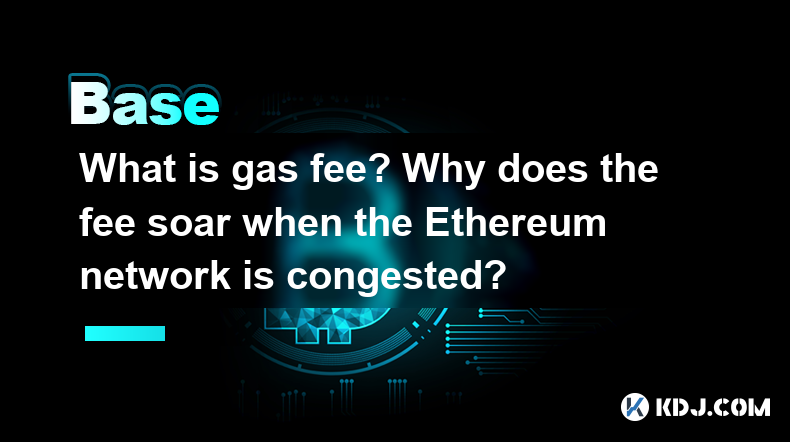
What is Gas Fee?
Gas fee is a term used in the Ethereum blockchain to describe the cost required to perform a transaction or execute a smart contract. It is essentially the fee that users pay to miners for processing and validating their transactions on the Ethereum network. The concept of gas is crucial because it helps manage the resources used by the network and prevents any single transaction from consuming too much computational power.
The term "gas" itself refers to the unit of measurement for the computational effort required to execute operations on the Ethereum network. Each operation has a specific gas cost, and the total gas used by a transaction is the sum of the gas costs of all operations performed. The gas fee is calculated by multiplying the total gas used by the gas price, which is the amount of Ether (ETH) the user is willing to pay per unit of gas.
Why Does the Fee Soar When the Ethereum Network is Congested?
When the Ethereum network experiences high demand, the gas fees can soar due to several factors. The primary reason is the limited block size and block time of the Ethereum network. Ethereum blocks have a gas limit, which is the maximum amount of gas that can be used by all transactions in a block. When the network is congested, the number of transactions waiting to be processed increases, leading to a higher competition for block space.
Miners prioritize transactions based on the gas price offered by users. When the network is congested, users are willing to pay higher gas prices to have their transactions processed faster. This bidding war for block space drives up the average gas price, resulting in higher gas fees. Additionally, the fixed block time of approximately 15 seconds means that only a limited number of transactions can be included in each block, further exacerbating the congestion and increasing fees.
How is Gas Fee Calculated?
To understand how gas fees are calculated, it's important to break down the components involved. The total gas fee for a transaction is determined by two main factors: the gas limit and the gas price.
Gas Limit: This is the maximum amount of gas that a user is willing to spend on a transaction. It acts as a safeguard to prevent the transaction from consuming too much computational power. If the gas used by the transaction exceeds the gas limit, the transaction is reverted, but the user still pays for the gas used up to the limit.
Gas Price: This is the amount of Ether (ETH) that a user is willing to pay per unit of gas. It is usually measured in Gwei, where 1 Gwei equals 0.000000001 ETH. The gas price can be adjusted by the user to prioritize their transaction. A higher gas price increases the likelihood of the transaction being processed quickly.
The total gas fee is calculated using the formula: Gas Fee = Gas Used Gas Price. For example, if a transaction uses 20,000 gas and the gas price is set at 20 Gwei, the total gas fee would be 20,000 20 = 400,000 Gwei, which equals 0.0004 ETH.
How to Estimate and Set Gas Fees
Estimating and setting the appropriate gas fee is crucial for ensuring that transactions are processed efficiently. Here are the steps to estimate and set gas fees:
Use Gas Estimators: There are various online tools and platforms, such as EthGasStation and GasNow, that provide real-time data on gas prices and estimated wait times. These tools can help users determine the optimal gas price for their transactions.
Check Network Congestion: Before setting a gas price, it's important to check the current state of the Ethereum network. High congestion typically requires higher gas prices to ensure timely processing.
Adjust Gas Price: Users can adjust the gas price based on their urgency. For non-urgent transactions, a lower gas price can be set, which may result in longer wait times but lower fees. For urgent transactions, a higher gas price can be set to prioritize processing.
Set Gas Limit: The gas limit should be set based on the complexity of the transaction. Simple transactions, such as sending ETH, typically require less gas than complex smart contract interactions. Most wallets and platforms provide default gas limits, but users can adjust them if needed.
Impact of High Gas Fees on Users and Developers
High gas fees can have significant impacts on both users and developers within the Ethereum ecosystem. For users, high fees can make small transactions uneconomical, leading to a decrease in the usability of the network for everyday purposes. Users may be deterred from using decentralized applications (dApps) if the cost of interacting with them becomes prohibitively high.
For developers, high gas fees can affect the design and functionality of their dApps. Developers may need to optimize their smart contracts to reduce gas consumption, which can be a complex and time-consuming process. Additionally, high fees can limit the adoption of their applications, as users may be less willing to engage with dApps that require frequent transactions.
Strategies to Mitigate High Gas Fees
There are several strategies that users and developers can employ to mitigate the impact of high gas fees. For users, one approach is to batch multiple transactions into a single transaction, which can reduce the overall gas cost. Another strategy is to use layer 2 scaling solutions, such as Optimism or Arbitrum, which can process transactions off the main Ethereum chain and then settle them in batches, significantly reducing gas fees.
For developers, optimizing smart contracts to minimize gas usage is crucial. This can involve simplifying the logic of the contract, reducing the number of storage operations, and using more gas-efficient programming techniques. Additionally, developers can consider using alternative blockchains with lower transaction fees for certain functionalities, while still leveraging Ethereum for its security and decentralization.
Frequently Asked Questions
Q: Can gas fees be refunded if a transaction fails?
A: If a transaction fails due to running out of gas, the user will not receive a refund for the gas used up to the point of failure. However, any unused gas from the gas limit will be returned to the user.
Q: How can I check the current gas price on the Ethereum network?
A: You can check the current gas price using various online tools such as EthGasStation, GasNow, or through your Ethereum wallet, which often provides real-time gas price estimates.
Q: Are there any alternatives to paying high gas fees on Ethereum?
A: Yes, alternatives include using layer 2 scaling solutions like Optimism or Arbitrum, which can significantly reduce gas fees by processing transactions off the main Ethereum chain. Additionally, some users opt for alternative blockchains with lower transaction fees for certain operations.
Q: How does the Ethereum Improvement Proposal (EIP) 1559 affect gas fees?
A: EIP-1559 introduced a new fee structure that includes a base fee, which is burned, and an optional tip to miners. This change aims to make gas fees more predictable and reduce the volatility of transaction costs during network congestion.
Disclaimer:info@kdj.com
The information provided is not trading advice. kdj.com does not assume any responsibility for any investments made based on the information provided in this article. Cryptocurrencies are highly volatile and it is highly recommended that you invest with caution after thorough research!
If you believe that the content used on this website infringes your copyright, please contact us immediately (info@kdj.com) and we will delete it promptly.
- Wyoming Is Launching a Stablecoin Later This Year, Which Could Be the First Issued by a Public Entity in the U.S.
- 2025-04-08 14:20:12
- BNB vs SOL: Which Crypto to Invest in?
- 2025-04-08 14:20:12
- Big News for XRP as Ripple CEO Meets with Trump and Sparks Intrigue Within the Cryptocurrency Community Hinting at Promising Developments.
- 2025-04-08 14:15:12
- Interactive Brokers Expands Cryptocurrency Portfolio by Adding Four Major Altcoins
- 2025-04-08 14:15:12
- US stocks fall on Wednesday, dragged down by a sharp sell-off in tech stocks, as renewed trade war concerns rattle investors
- 2025-04-08 14:10:12
- Just 24 Hours After Adding Its Name to the Roster of Companies Pursuing a Bitcoin (BTC) Treasury Strategy, GameStop (GME) — Led by Its CEO Ryan Cohen — Is Also Adding Its Name to Those Firms Issuing Convertible Debt to Raise Funds for BTC Acquisition
- 2025-04-08 14:10:12
Related knowledge
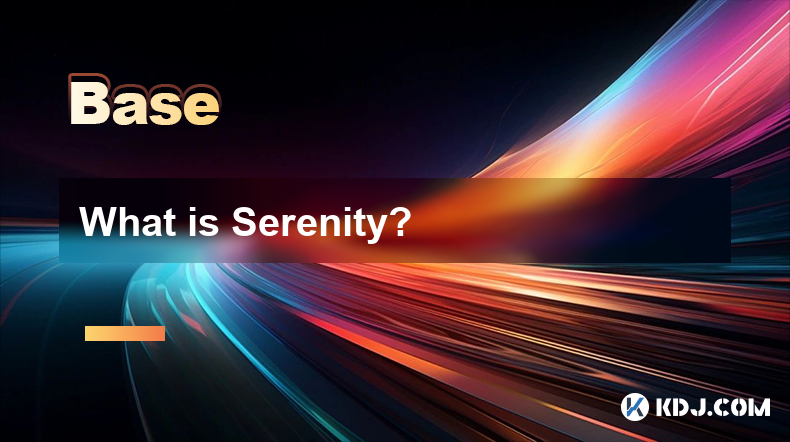
What is Serenity?
Apr 08,2025 at 02:00pm
Serenity, also known as Ethereum 2.0, represents a major upgrade to the Ethereum blockchain. This ambitious project aims to address the scalability, security, and sustainability issues faced by the current Ethereum network. Serenity is not a single update but a series of upgrades that will transform Ethereum into a more efficient and robust platform. Th...

What is Finality Gadget?
Apr 08,2025 at 04:14am
The Finality Gadget is a crucial component in the architecture of certain blockchain networks, particularly those that utilize a hybrid consensus mechanism. It plays a pivotal role in ensuring the finality of transactions, which means that once a transaction is confirmed, it cannot be altered or reversed. This article delves into the intricacies of the ...
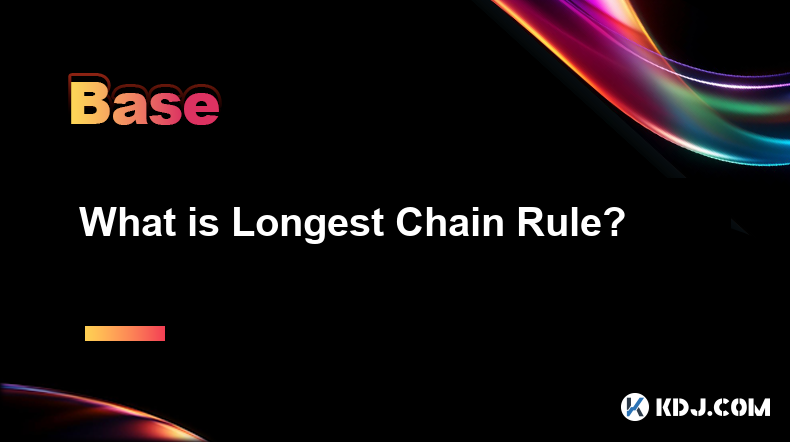
What is Longest Chain Rule?
Apr 08,2025 at 07:50am
The Longest Chain Rule is a fundamental concept in blockchain technology, particularly in the context of cryptocurrencies like Bitcoin. This rule is crucial for maintaining the integrity and security of the blockchain network. In essence, the Longest Chain Rule dictates that the valid blockchain is the one with the most cumulative proof-of-work, which i...

What is Orphan Block?
Apr 08,2025 at 05:00am
What is an Orphan Block?In the world of cryptocurrencies, particularly in blockchain technology, the term orphan block is frequently encountered. An orphan block is a block that has been mined and added to the blockchain but is later discarded or replaced by another block. This phenomenon occurs due to the decentralized nature of blockchain networks, wh...
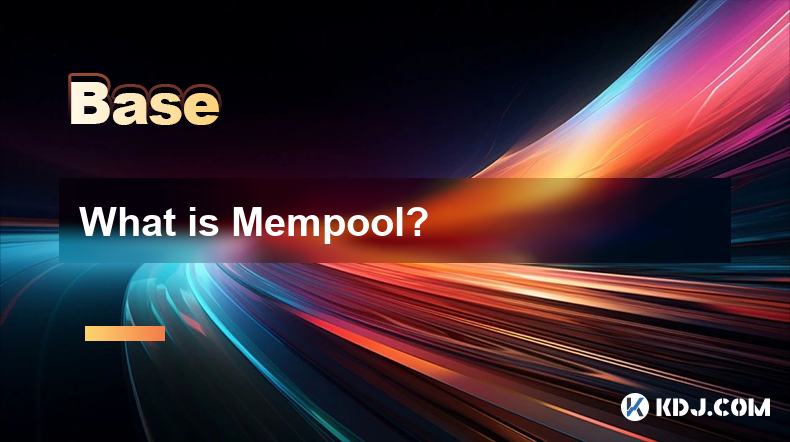
What is Mempool?
Apr 08,2025 at 12:36pm
What is Mempool?In the world of cryptocurrencies, particularly Bitcoin, the term Mempool is frequently mentioned. But what exactly is a Mempool, and why is it important? A Mempool, short for memory pool, is a critical component of the blockchain network that serves as a temporary storage area for unconfirmed transactions. When a user initiates a transac...
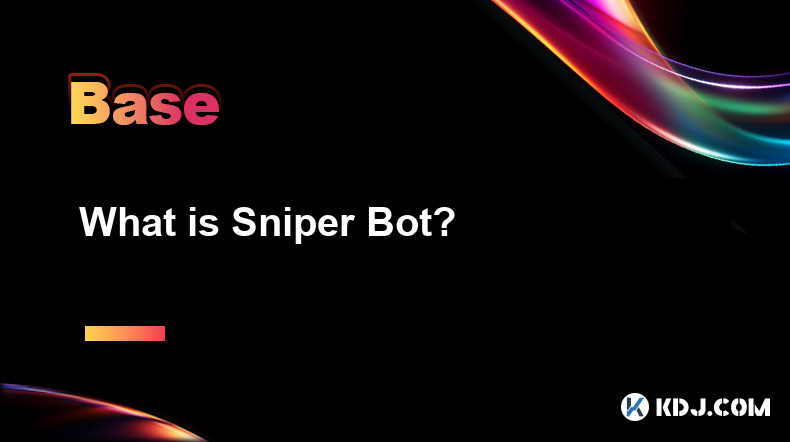
What is Sniper Bot?
Apr 07,2025 at 10:43pm
A Sniper Bot is a type of automated trading software used within the cryptocurrency market to execute trades at optimal times, often milliseconds before other traders. These bots are designed to take advantage of new token listings, price fluctuations, and other market opportunities to buy or sell assets quickly and efficiently. The primary goal of a Sn...

What is Serenity?
Apr 08,2025 at 02:00pm
Serenity, also known as Ethereum 2.0, represents a major upgrade to the Ethereum blockchain. This ambitious project aims to address the scalability, security, and sustainability issues faced by the current Ethereum network. Serenity is not a single update but a series of upgrades that will transform Ethereum into a more efficient and robust platform. Th...

What is Finality Gadget?
Apr 08,2025 at 04:14am
The Finality Gadget is a crucial component in the architecture of certain blockchain networks, particularly those that utilize a hybrid consensus mechanism. It plays a pivotal role in ensuring the finality of transactions, which means that once a transaction is confirmed, it cannot be altered or reversed. This article delves into the intricacies of the ...

What is Longest Chain Rule?
Apr 08,2025 at 07:50am
The Longest Chain Rule is a fundamental concept in blockchain technology, particularly in the context of cryptocurrencies like Bitcoin. This rule is crucial for maintaining the integrity and security of the blockchain network. In essence, the Longest Chain Rule dictates that the valid blockchain is the one with the most cumulative proof-of-work, which i...

What is Orphan Block?
Apr 08,2025 at 05:00am
What is an Orphan Block?In the world of cryptocurrencies, particularly in blockchain technology, the term orphan block is frequently encountered. An orphan block is a block that has been mined and added to the blockchain but is later discarded or replaced by another block. This phenomenon occurs due to the decentralized nature of blockchain networks, wh...

What is Mempool?
Apr 08,2025 at 12:36pm
What is Mempool?In the world of cryptocurrencies, particularly Bitcoin, the term Mempool is frequently mentioned. But what exactly is a Mempool, and why is it important? A Mempool, short for memory pool, is a critical component of the blockchain network that serves as a temporary storage area for unconfirmed transactions. When a user initiates a transac...

What is Sniper Bot?
Apr 07,2025 at 10:43pm
A Sniper Bot is a type of automated trading software used within the cryptocurrency market to execute trades at optimal times, often milliseconds before other traders. These bots are designed to take advantage of new token listings, price fluctuations, and other market opportunities to buy or sell assets quickly and efficiently. The primary goal of a Sn...
See all articles






















































































